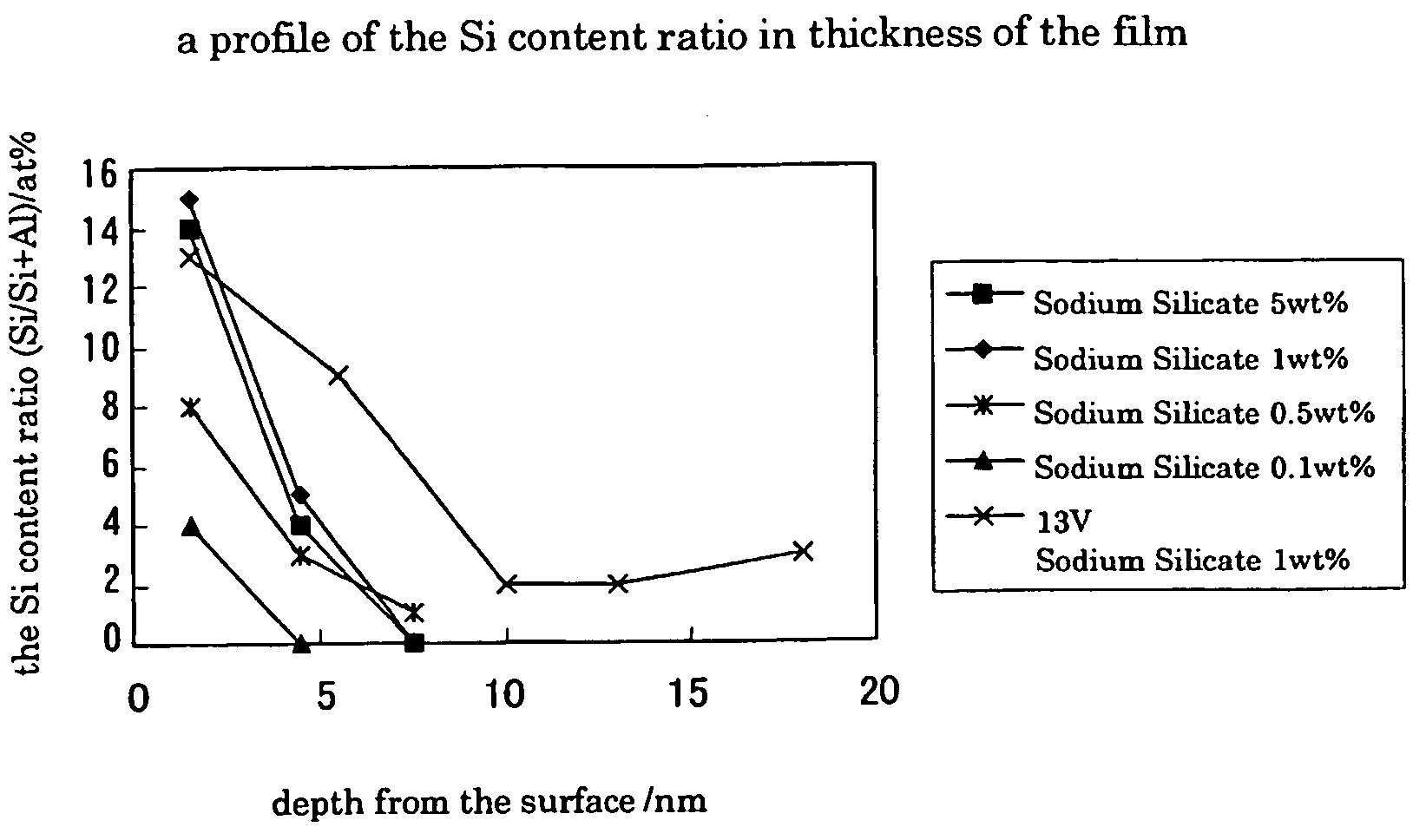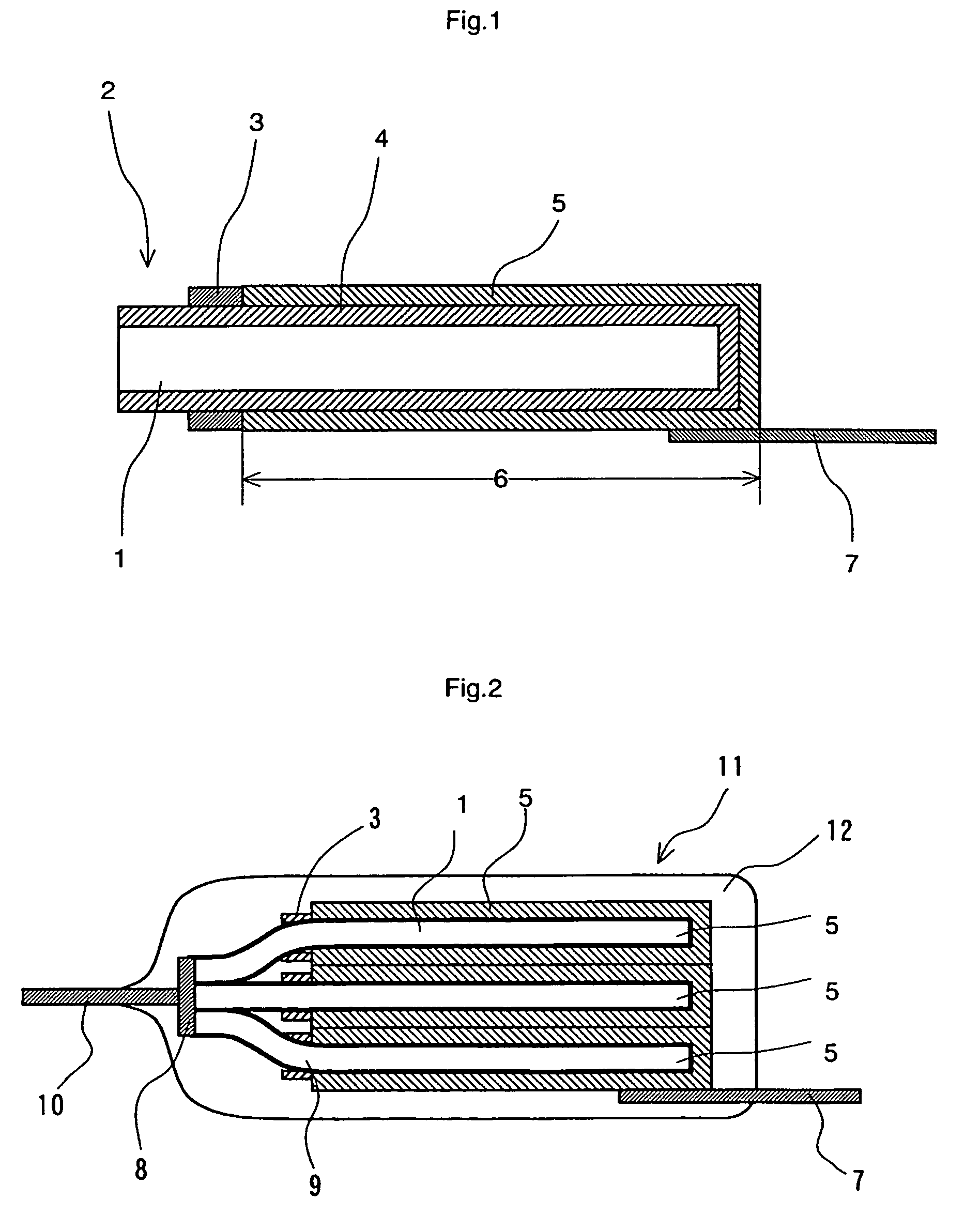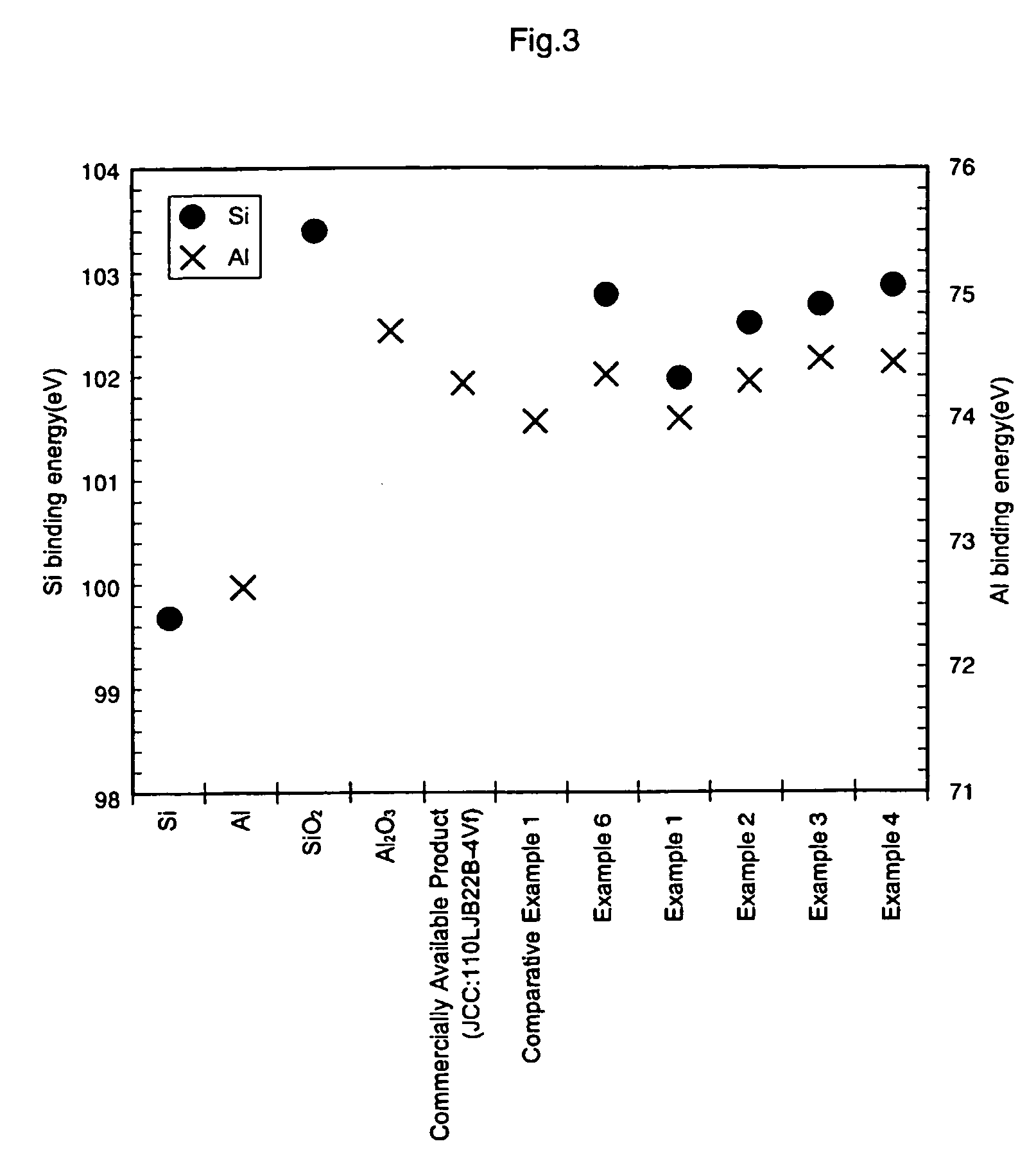Formed substrate used for solid electrolytic capacitor, production method thereof and solid electrolytic capacitor using the substrate
a solid electrolytic capacitor and substrate technology, applied in the direction of oxide conductors, conductors, non-metal conductors, etc., can solve the problems of not meeting the theoretical electrostatic capacitance, the electrostatic capacitance of conventional aluminum solid electrolytic capacitors at a forming voltage less than 20 v, etc., to improve the electrostatic capacitance, reduce the dispersion of capacitor performance, and improve the effect of electrostatic capacitan
- Summary
- Abstract
- Description
- Claims
- Application Information
AI Technical Summary
Benefits of technology
Problems solved by technology
Method used
Image
Examples
example 1
[0095]A formed aluminum foil (110LJ22B4Vf, trade name, produced by Japan Capacitor Industrial Co., Ltd. (JCC)) (rated film withstand voltage: 4 Vf) was cut and divided into the cathode part and the anode part by a masking material (3). The side working out to a cathode part was electrochemically formed with an aqueous 5 mass % oxalic acid solution at 25° C. for 120 seconds and then washed with water.
[0096]Thereafter, the foil was electrochemically formed using an aqueous 0.1 mass % sodium silicate solution under the conditions such that the temperature was 40° C., the voltage was 4 V, the current density was 5 mA / cm2 and the current passing time was 10 minutes. FIGS. 3 and 4 show the relationship of Si (101.97 eV), O (530.94 eV) and Al (73.98 eV) binding energy values when the foil at this stage was analyzed by XPS.
[0097]Subsequently, the resulting formed foil was heat-treated at 350° C. for 3 minutes and then electrochemically formed using an aqueous 10 mass % ammonium adipate solu...
example 2
[0099]A formed aluminum foil (110LJ22B4Vf, trade name, produced by Japan Capacitor Industrial Co., Ltd. (JCC)) (rated film withstand voltage: 4 Vf) was cut and divided into the cathode part and the anode part by a masking material (3). The side working out to a cathode part was electrochemically formed with an aqueous 5 mass % oxalic acid solution at 25° C. for 120 seconds and then washed with water.
[0100]Subsequently, a capacitor was manufactured by the same operation as in Example 1 except for using an aqueous 0.5 mass % sodium silicate solution in place of an aqueous 0.1 mass % sodium silicate solution. The obtained capacitor was measured on the electrostatic capacitance and the leakage current property. The results are shown in Table 1. FIGS. 3 and 4 show the relationship of Si (102.50 eV), O (531.26 eV) and Al (74.28 eV) binding energy values when the foil at this stage was analyzed by XPS.
example 3
[0101]A formed aluminum foil (110LJ22B4Vf, trade name, produced by Japan Capacitor Industrial Co., Ltd. (JCC)) (rated film withstand voltage: 4 Vf) was cut and divided into the cathode part and the anode part by a masking material (3). The side working out to a cathode part was electrochemically formed with an aqueous 5 mass % oxalic acid solution at 25° C. for 120 seconds and then washed with water.
[0102]Subsequently, a capacitor was manufactured by the same operation as in Example 1 except for using an aqueous 1.0 mass % sodium silicate solution in place of an aqueous 0.1 mass % sodium silicate solution. The obtained capacitor was measured on the electrostatic capacitance and the leakage current property. The results are shown in Table 1. FIGS. 3 and 4 show the relationship of Si (102.68 eV), O (531.39 eV) and Al (74.48 eV) binding energy values when the foil at this stage was analyzed by XPS.
PUM
| Property | Measurement | Unit |
|---|---|---|
| binding energy | aaaaa | aaaaa |
| binding energy | aaaaa | aaaaa |
| binding energy | aaaaa | aaaaa |
Abstract
Description
Claims
Application Information
 Login to View More
Login to View More - R&D
- Intellectual Property
- Life Sciences
- Materials
- Tech Scout
- Unparalleled Data Quality
- Higher Quality Content
- 60% Fewer Hallucinations
Browse by: Latest US Patents, China's latest patents, Technical Efficacy Thesaurus, Application Domain, Technology Topic, Popular Technical Reports.
© 2025 PatSnap. All rights reserved.Legal|Privacy policy|Modern Slavery Act Transparency Statement|Sitemap|About US| Contact US: help@patsnap.com



